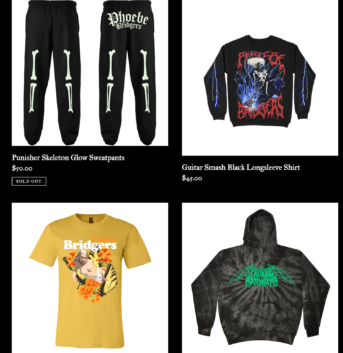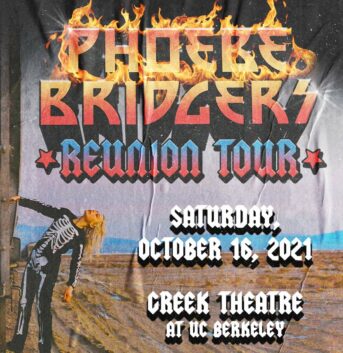Enter Sandman: How heavy metal is shaping youth culture
After decades on the fringes, metalheads are now shaping the mainstream. Jonny Collin, Senior Strategist at BBH London, explores why Gen Z are turning it up to 11.
If you haven’t watched Netflix’s latest docuseries, I am here to tell you something: you absolutely should. Trainwreck: Woodstock ‘99 is basically FYRE with mosh pits.
As a ‘90s child whose musical coming-of-age coincided with the rise of nu-metal, this is a viewing experience of sweet, chaotic, nostalgia. And it’s not even my, or the internet’s, favourite heavy metal moment on Netflix this year.
Feast your eyes and ears upon Stranger Things’ Eddie Munson shredding Metallica’s Master of Puppets in the Upside Down. Metallica liked it. They gave actor Joseph Quinn a signed guitar.

When you add the fact that Attack on Titan (the ‘Most In-Demand TV Show In The World 2021’) has the most metal theme song ever, it’s clear that something’s going on.
Are these signs of a turning of the cultural wheel? Is heavy metal, and heavy music, on the cusp of a renewed moment at the forefront of culture?
If it is, how did this happen? And why now?
Well, perhaps the obvious answer is the correct one.
A common misconception is that metal represents little more than musical aggression. It’s an outlet, yes, but not always for aggression, violence, malevolence or any of the more insidious tropes commonly associated with heavy music.
Really, it’s a genre all about catharsis, one that has as much room for what Kerrang! called “beautifully crafted labour of hate” as there is for a track recently declared “one of the best songs ever written” by Elton John.
Right now, there’s a lot to get cathartic about. From economic instability to environmental collapse, continental war to a lingering pandemic, stressors abound. I think few would argue that society is closer to what the WHO labelled the “Extreme” end of the spectrum in their recent World Mental Health Report:

This suggests that even those with low individual vulnerability are at higher risk of mental health conditions right now, and the statistics bear this out.
According to the UK Government, an estimated 1 in 6 adults have experienced a ‘common mental disorder’ like depression or anxiety in the past week. The number remains the same for those aged 6-16, though the number is now 1 in 6 following a marked increase from 1 in 9 in 2017. So the question becomes, where do younger generations seek their solace?
Unlike previous generations, they increasingly turn to their virtues, not vices, for escape. According to GWI, Gen Z are less likely to drink any kind of alcohol every month than any other generation, with a third saying this is “to avoid getting drunk”.
The picture is more nuanced when it comes to narcotics. Pandemic-induced lockdowns saw increased use of psychedelics among students – likely because they can make it easier to accept distressing situations. But, 9% of Gen Z using LSD and psilocybin mushrooms pales in comparison to the 61% that choose music.
Looking at music more broadly, how heavy metal arrived on the precipice of resurgence begins to come into sharper focus.
Billie Eilish, Phoebe Bridgers, and Lil Nas X are three of today’s biggest stars – and they all borrow liberally from heavy music.
Vogue has just decreed Billie Eilish “will always be the ultimate Goth girl”. She wears shirts featuring the likes of Metallica, Misfits, and, now, death-thrash band Ghoul whilst performing.

Alt-rock darling Phoebe Bridgers is similarly embracing metal with her merch and promotional posters.


And Lil Nas X is doing something very similar, though very different.
Cast your mind back to 2021, and the release of the music video for MONTERO (Call Me By Your Name)… you know, the one where he gives Satan a lap dance. Just as prominent as the provocative, triumphant, unapologetic queerness were some visual tropes more often associated with metal.

Ever since the ‘Satanic Panic’ of the 1980s, the dark lord himself has always been associated with heavy metal. And yet, here is one of the biggest hip-hop stars in the world, not only gyrating on Lucifer’s lap, but indulging in more traditional metal tropes: blood, inverted crosses, the pentagram.


Nike were so incensed by the 666 pairs of unofficial Air Max 97s, they proceeded to sue Lil Nas X and the shoes’ creators at MSCHF. Which, of course, only made the hype even more beastly.
Speaking of hype, understanding why metal’s moment may have arrived, we need to discuss another subculture leading the zeitgeist in 2022: gaming.
Gamers might be the most lusted-after audience segment outside of Gen Z. After all, they’re the ones whose avatars are running around in proto-Metaverse franchises such as Roblox, Minecraft and Fortnite. The likes of Nike (Roblox), Puma (Minecraft) and Wendy’s (Fortnite) have all rushed to get their brands into gamers’ (virtual) hands.
And gamers are loving heavy music right now. According to GWI, heavy metal has seen a +11% increase in popularity among the USA gamer community – more than any other genre.
You might think this is because both indulge in violence. But when you interrogate this heavy metal-listening, video game-playing audience, a familiar theme emerges: catharsis. This is a subculture in search of an outlet.
They worry about environmental decline (1.28i) and openly discuss their mental health (1.30i). So maybe it shouldn’t have been a surprise to see Brighton metalcore maestros (and outspoken vegans, environmentalists, and mental health advocates) Architects landed their first No. 1 album earlier this year aptly named For Those That Wish To Exist.

I’m fully aware this has been a pillar-to-post journey through pop culture and you are waiting on a pithy conclusion and profound lesson for us brand-builders.
So here goes…
Whilst we talk about placing brands in culture, marketing myopia has narrowed our perception of what culture looks and sounds like – more Lil Nas X than Architects. Whilst we see ourselves as existing at the bleeding edge of change, we still swim in the monotonous comfort of the mainstream – more Stranger Things than Attack on Titan.
If we are to deliver the fame and disruption we eulogise, we need to open our cultural aperture and embrace the noise. Heavy metal’s renaissance is upon us.
As the Master of Puppets himself first said:
“Taste me you will see
More is all you need”